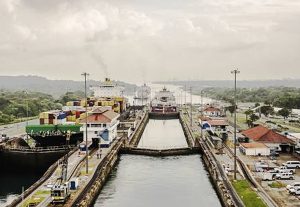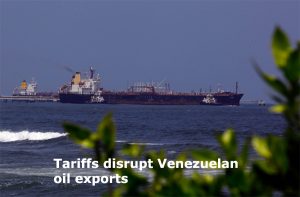- The former director of Europe’s largest nuclear facility describes abuse of Ukrainian workers and careless practices by the Russians who took control of the plant.

Marc Santora, NYTimes
KYIV, Ukraine
energiesnet.com 03 28 2023
By the time Russian soldiers threw a potato sack over his head and forced him to record a false video statement about conditions at Europe’s largest nuclear facility, Ihor Murashov had already witnessed enough chaos at the plant to be deeply worried.
Mr. Murashov, the former director general of the Zaporizhzhia Nuclear Power Plant in Ukraine, did not know how much more stress the workers there could endure as they raced from one crisis to another to avert a nuclear catastrophe.
He watched as staff members were dragged off to a place they called “the pit” at a nearby police station, returning beaten and bruised — if they returned at all. He was there when advancing Russian soldiers opened fire at the facility in the first days of the war and he fretted as the they mined the surrounding grounds. He witnessed Russians use nuclear reactor rooms to hide military equipment, risking an accident.
Mr. Murashov, 46, is gone from Zaporizhzhia now, having been expelled from Russian occupied territory in October. In the months since, the situation at the plant has only grown more precarious, according to Ukrainian officials and international observers.
On March 9, it was plunged into a blackout for the sixth time since the occupation, forcing nuclear engineers to rely on hulking diesel generators to keep critical cooling equipment running.

Rafael Mariano Grossi, the director general of the United Nations’ International Atomic Energy Agency, has raised repeated alarms about the mounting dangers. On Monday, he met with President Volodymyr Zelensky of Ukraine to discuss the problem, and he plans to visit the facility on Wednesday for only the second time since the war started.
Only around 4,600 of the plant’s 11,000 employees are still working, Petro Kotin, the head of Energoatom, Ukraine’s state nuclear power company, said in an interview. Employees at the facility have been given a deadline of April 1 to sign contracts with Rosatom, a state-owned Russian nuclear conglomerate. About 2,600 have signed the contract and the rest are still refusing, Mr. Kotin said.

The current problems are not a surprise to Mr. Murashov, who recounted his experience over several hours of conversation recently, providing a harrowing account of how Europe’s largest nuclear power plant had descended into such turmoil.
His account could not be independently verified, but it aligns with testimony from other workers who have since fled and those still there who have been interviewed by The New York Times and other news organizations over the past year.
The State of the War
- A New Nuclear Threat: President Vladimir Putin of Russia said he would be able to position nuclear weapons in Belarus by the summer, a claim that analysts said was likely bluster but which underscored his willingness to use the specter of nuclear conflict to pressure the West.
- Restoring a Giant Plane: Ukraine plans to rebuild the colossal Mriya cargo plane, a symbol of pride that was destroyed in the first days of the war. But critics say there are far more pressing needs.
- Heroes or Criminals?: As thousands of Russian ex-prisoners fight and die in Ukraine, honoring their memory is becoming a patriotic imperative back home. But some committed crimes their old neighbors cannot forget.
____________________________________________________
Mr. Murashov said the Russians set up special areas in the nearby satellite town where employees were interrogated, bullied and beaten.
“There were two places called ‘the pits,’” Mr. Murashov said. “One was the police department in the town. Another was inside the local military unit.”
Mr. Murashov added: “I saw one of the employees who went to the pit, and he was all yellow because of the bruises he had been given. So I knew what could happen.”
Workers were sometimes taken from their homes, he said, and other times stopped at checkpoints as they entered the plant and taken away. They were routinely checked for pro-Ukrainian content.
At first, he and other employees said, the Russians were searching for people who manned barricades trying to prevent Russian soldiers from entering the town. Later, he said, they seemed intent on getting employees to sign contracts with Rosatom.
Until about a month ago, the plant was under Russian military occupation but the engineers still reported to Kyiv for technical instructions. That has ended, Mr. Kotin said.
It is also now virtually impossible for the workers who remain to escape, Ukrainian officials said, since the road to Ukrainian-controlled territory is closed. By the time Mr. Murashov left the plant this past fall, most of the workers’ families had fled.

Many of the employees who remained viewed it as their duty keep the plant running safely, while others have been more actively collaborating with the Russians, Ukrainian officials said. Mr. Kotin said a special panel has been set up to examine each case individually.
Ukrainian authorities now have limited visibility into what is happening at the plant aside from the daily technical updates provided by monitors from the I.A.E.A., who have been stationed there since Sept. 1. Mr. Grossi has not commented publicly on specific reports of abuse but has repeatedly expressed concern for the physical and mental health of the workers.
Mr. Murashov said he initially hoped the U.N. monitors would improve the situation. But he described the morning they arrived on Sept. 1 as one of the worst days he experienced during the occupation.
Mr. Murashov got an urgent call from the nuclear power plant at 4 a.m. The Russians, who for a month had been shelling key energy lines feeding the plant, were shelling again, he was told. Another call came at 5 a.m. The alarm in Reactor No. 5 was blaring. As he raced to the station, he said, Russians started shelling the town of Enerhodar, where the plant is. He could see Russian attack helicopters flying low as he drove.
“We had to assess quickly what happened around and in the station,” he said.
They also had to prepare for the mission from the I.A.E.A. Mr. Grossi and his team arrived around 1 p.m., and Ukrainian engineers were able to give a short briefing outside the presence of the Russians. But as they started going around the station, he said, Russians took over and told the inspectors the shelling had come from Ukrainian positions.
“With all that mess, we had almost no chance to voice what was happening at the station and what we knew for sure,” Mr. Murashov said.

The last of the facility’s six reactors was cycled down 12 days after that visit. The plant is no longer producing energy, but external power is still essential to run critical cooling and other safety systems.
Ukrainian officials believe that after the Russians failed to find a way to divert the power from the reactors for their own use, they were trying to simply ruin the facility.
“Their goal is to make the situation so difficult that when we get it back, it will be unusable,” Ukraine’s energy minister, Herman Halushchenko, said in an interview in early March.
Ukrainian officials say the number of Russian troops at the plant is growing because they know it is perhaps the safest location in southern Ukraine to avoid being bombed by Ukrainian forces.
Mr. Murashov was appointed the plant’s director on Feb. 16, 2022 — just days before Russia launched its full-scale invasion.
The night the Russians invaded, Mr. Murashov moved with hundreds of workers to bunkers under the facility. On March 3, the Russians blasted their way into the town and were approaching the station.
That night, the Russians opened fire at the plant, and Mr. Murashov directed the staff to stream the security camera footage on YouTube so the world could see what was happening.
“On the morning of March 4, I received a call from the mayor,” he said. The Russians wanted to talk.
He emerged from the bunker to find a scene of devastation. There was smoke in the air and pools of blood on the ground, he said. Alarms blared in the distance. The dead body of a Ukrainian National Guard soldier lay near the entrance of the plant.
When the plant director met the Russian general in command, the officer seemed more concerned about why his soldiers were not welcomed as liberators than anything happening at the nuclear plant, Mr. Murashov said.
As the months passed and Russian forces lost ground in other parts of the country, things got worse for the Ukrainians at the plant. Workers started disappearing, Russian snipers watched from the rooftops, and more heavy artillery was moved into the facility, increasing the risk of an accident.
When his workers needed to perform maintenance in certain areas, Mr. Murashov said, they alerted the Russians in advance so the Ukrainians would not get shot.
Mr. Kotin, the Energoatom executive, said at least 200 workers were detained and at least 30 remain missing.

On Aug. 5, the facility was shelled for the first time. On Aug. 25, it experienced its first blackout.
The Russians pressed Mr. Murashov to sign a contract with Rosatom but he refused. As he was driving to his home on Sept. 30, the Russians intercepted him.
“They checked my papers and then they put bags on my head and my driver’s head,” he said.
“I was afraid,” he said. “I did not know what was going on, I could not imagine what would happen next.”
Having grown up in Energodar, he knew the roads well and noted every turn. “I knew I was being brought to the local department of Security Service of Ukraine,” he said.
He said he was made to sit in a chair with the sack over his head in handcuffs for 24 hours.
Three days after he was detained, he was forced to record a video. It remains a source of shame.
“The worst thing that I voiced is that quite likely the station was shelled by Armed Forces of Ukraine,” he said. “They made me sign a paper saying that my statement could not be retracted.”
“Now I take it back,” he said.
After he made the video, the sack was placed back over his head and he was thrown into a car with Russian soldiers. He remembered the Cranberries antiwar ballad, “Zombie,” playing as they drove. He was let out near the crossing to Ukrainian controlled territory and, without explanation, he was set free.
- Anna Lukinova contributed reporting.
- Marc Santora is the international news editor based in London, focusing on breaking news events. He was previously the bureau chief for East and Central Europe, based in Warsaw. He has also reported extensively from Iraq and Africa. @MarcSantoraNYT
A version of this article appears on the NYTimes in print on March 29, 2023, Section A, Page 4 of the New York edition with the headline: Torture, Interrogations And Nuclear Perils: Insider Tells of Abuses At Russian-Held Plant.












